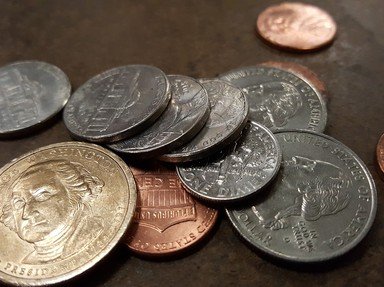Quiz Answer Key and Fun Facts
1. Order the 2-cent piece, nickel 3-cent piece, silver 3-cent piece, and 20-cent piece in ascending order of when they were first minted.
2. The two-cent coin was the first coin to feature what?
3. What is on the reverse of the US two-cent coin?
4. The silver three-cent coin is also known as what?.
5. Why are silver 3-cent coins minted between 1863 and 1873 so rare?
6. The nickel three cent coin is approximately the same size as what other US coin?
7. The nickel three-cent coins were minted solely in Philadelphia, except for three years (1877, 1878, and 1886), when they were minted in Carson City.
8. The 20-cent piece was not minted for very long. For how many years were these coins minted for regular circulation (i.e. not proofs only)?
9. Why was the twenty-cent piece unpopular among spenders?
10. All 4 coins covered in this quiz are still legal tender.
Source: Author
redsoxfan325
This quiz was reviewed by FunTrivia editor
ozzz2002 before going online.
Any errors found in FunTrivia content are routinely corrected through our feedback system.

